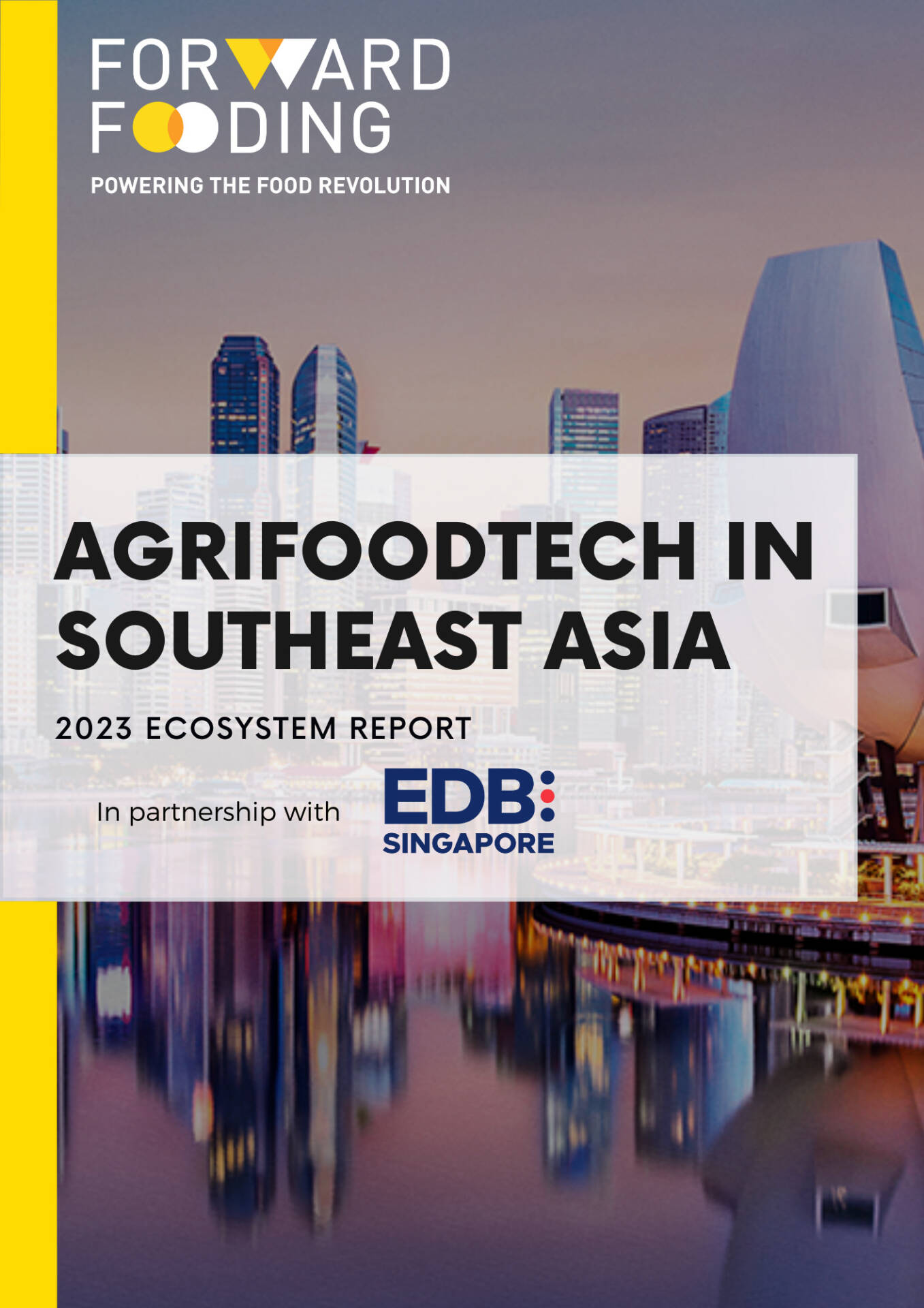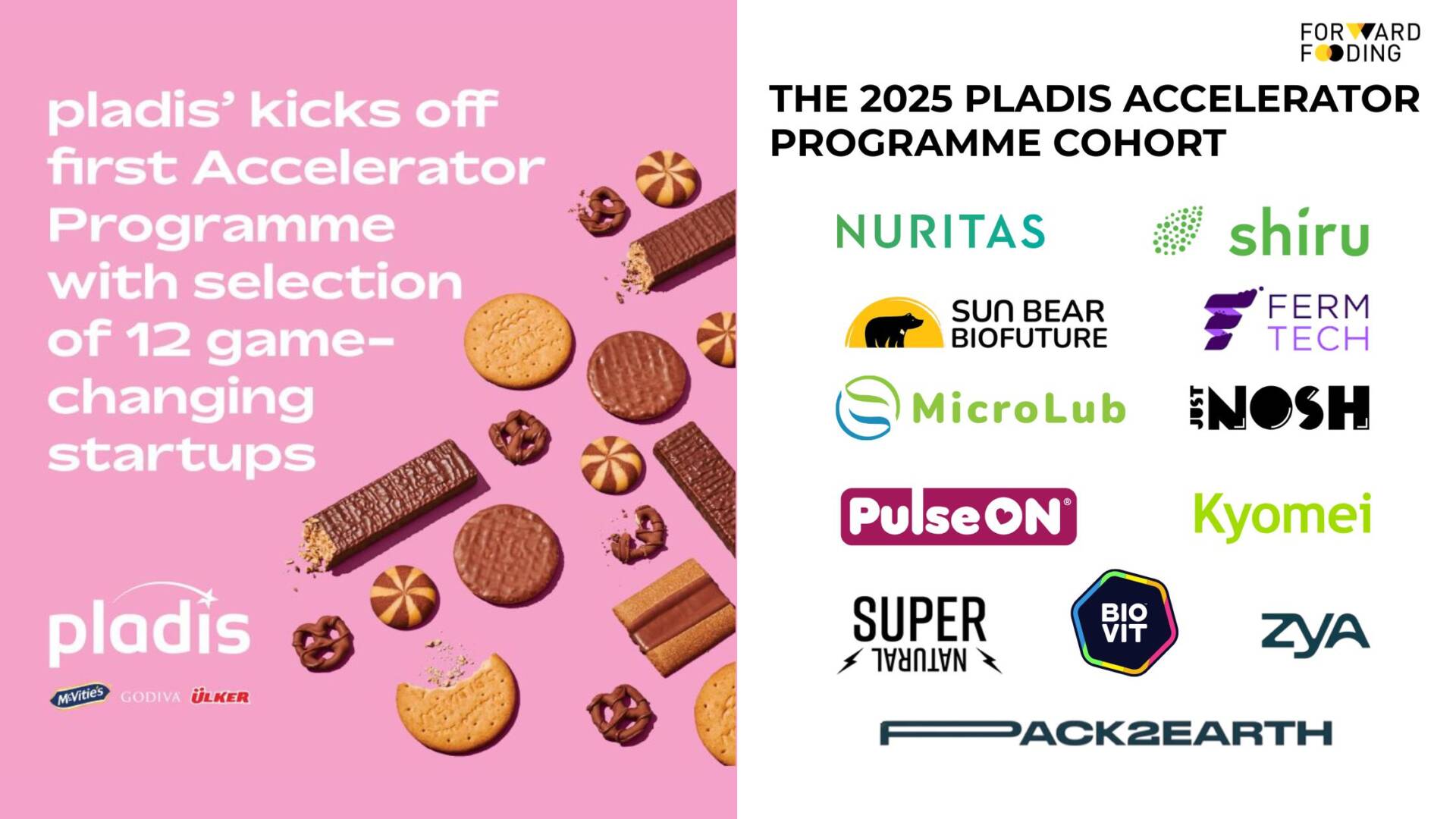FORWARD FOODING
THE BLOG
Cultivating the Future of Agriculture: A Step-by-Step Guide to Vertical Farming
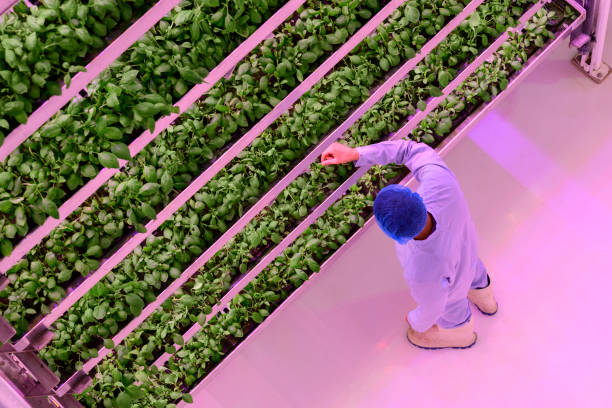
Vertical farming is a revolutionary approach to agriculture that defies convention by growing crops on vertical surfaces instead of traditional horizontal fields, hence the name “vertical” farming.
These vertical farms can be found within skyscrapers, repurposed warehouses, shipping containers, and even high-tech greenhouses. Essentially, they transform spaces that were previously unsuitable for farming into thriving agricultural hubs.
This innovation is especially vital as urban populations grow, allowing cities to meet their food demands sustainably. However, vertical farming is far from a simple stacking of plants. In this blogpost, we hope to give you a better understanding of this remarkable technology.
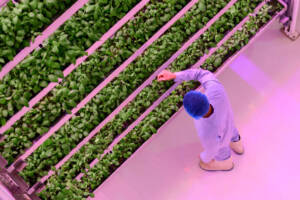
Market insights
Vertical farming has been flourishing in the past years. According to the FoodTech Data Navigator, there are 341 startups working in vertical farming. Despite recent reports indicating challenges within the vertical farming industry, including the financial struggles of some well-funded ventures, the global vertical farming market continues to exhibit resilient growth. As of 2022, its estimated value stood at approximately 5.6 billion U.S. dollars, and industry experts project a compound annual growth rate (CAGR) of 20.8%.
The global vertical farming market is currently largest in the United States, but there is potential for rapid growth in other countries facing space constraints, such as Singapore, or challenging climates, like those in the Middle East.
Moreover, several lesser-known companies claim to have found successful strategies for profitability in the vertical farming industry. For instance, Soli Organic, an organic herb grower, asserts that its patented soil-based approach sets it apart from most indoor farms and allows for profitability. Little Leaf Farms claims profitability by utilizing automated greenhouses. It is worth nothing that companies specializing in farming software and hardware for vertical farming continue to secure funding, and make profit.
Companies working in the field of farming software and hardware for vertical also continue to receive funding, and don’t have to carry the costs of regulating their own farms.
Exploring Vertical Farming: A Detailed Step-by-Step Journey
1. Start with a Plant
The initial step in vertical farming involves the careful selection of the plant to cultivate. Some popular choices for vertical farming include leafy greens, herbs, strawberries, and even small fruit trees. Why?
To choose crops for vertical farming, it is essential to take into account various factors such as compatibility with your growing system, growth time, and market demand. One might come across a crop choice that thrives rapidly in a chosen system but holds minimal market value. Alternatively, one might choose to grow a crop that is in high demand in the market but takes a long time to grow, which would entail a significant financial investment prior to realizing any substantial profit.
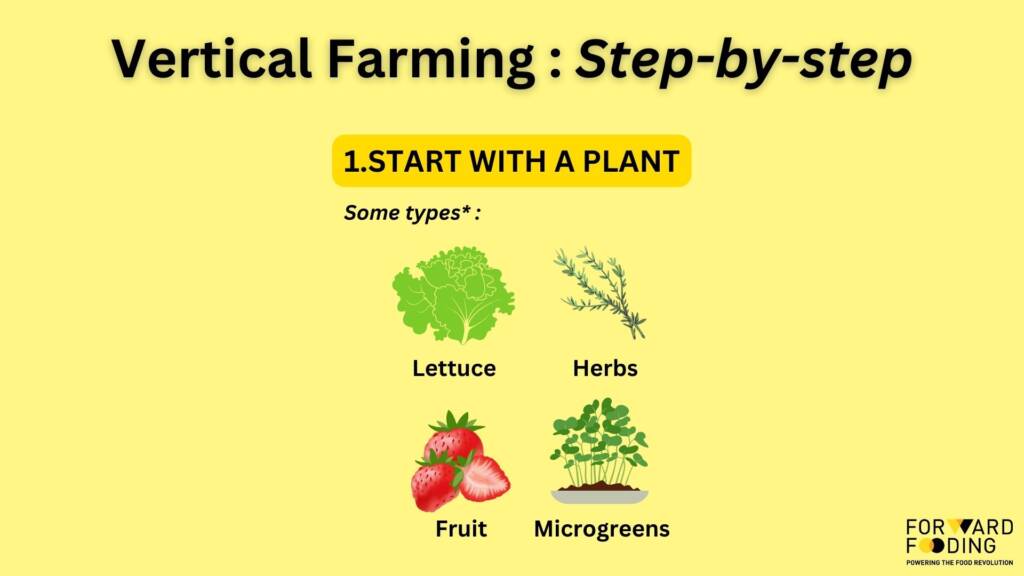
2. Select for a Controlled Environment
To make sure plants grow well, it’s important to create the correct conditions, especially when it comes temperature, humidity, light, and airflow. This practice can be referred to as “controlled environment agriculture”(CEA). CEA serves as the core of vertical farming; and enables year-round and pest-free crop cultivation.
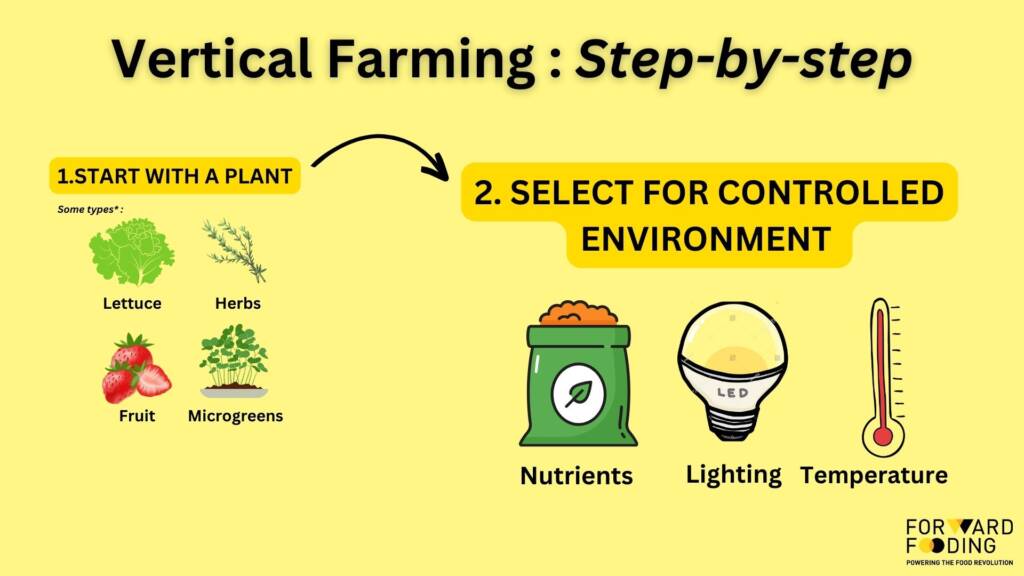
3. Select a Growing System
There are several different growing systems to choose from in vertical farming. Each has its advantages and disadvantages. Below are outlined three of the most common indoor vertical farming systems: aquaponics, aeroponics and hydroponics. In all cases, vertical farming makes no use of soil, but instead nutrient rich solutions.

- Hydroponics: This method uses a nutrient-rich water solution and various substrates to grow plants. Hydroponic vertical farming is considered the most efficient system due to its market viability and versatility. The main challenge is automating the system to reduce costs and minimise production risks.
- Aeroponics: Aeroponic vertical farming involves growing plants without soil by suspending the roots in air; and regularly being sprayed with a nutrient-rich mist solution. Aeroponics allows for faster growth and uses less water than hydroponics. However, aeroponics can be costly to establish and requires specialised equipment for misting.
- Aquaponics: Aquaponic vertical farming merges fish farming and hydroponics. Fish tank wastewater, which is filtered and enriched with nutrients, nourishes plants above. Afterward, the water is returned to the fish tanks. Advantages of aquaponic farming include optimal conditions for plant and fish growth, efficient use of space, and high oxygen levels in the water. However, it has a drawback: if one part of the system fails, the entire setup can fail. Additionally, it’s expensive to set up and expand compared to other systems like hydroponics.

4. Grow Plants in a Controlled Environment
After selecting the plant, creating a controlled environment, and choosing a growing system, it’s time to get planting and growing. Generally, the time it takes to grow depends on the type of plant.

Exploring Vertical Farming Innovators: Companies Leading the Way
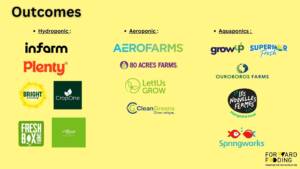
Capping Off: Insights, Hurdles, and Prospects in Vertical Farming
Challenges persist in the vertical farming sector, including high energy costs, with electricity expenses accounting for up to 40% of operational costs. The initial setup costs for vertical farms are also substantial, ranging from $2,500 to $3,500 per square meter, making profitability uncertain. While technology advancements may improve the sector’s viability in the future, it currently relies heavily on venture capital.
Despite recent bankruptcies in the vertical farming industry, there is still ongoing investment, albeit more selectively. In Europe, VC funds have invested £232 million in the sector in the current year, surpassing the total for 2022. Some companies like Gresham House are increasing their investments in vertical farming businesses, aiming for growth. Others, such as Futura Gaïa, Harvest London, and Arctic Farming, continue to attract venture capital investors due to concerns about climate change and food security.
If you wish to gain deeper insights into the key difficulties faced by the industry, feel free to read our recent interview with Sepehr Achard, Chief Executive Officer of iGrow News and expert in vertical farming. In this interview, you will have the opportunity to learn firsthand about the challenges currently impacting the industry.
Interested in Sharing this Journey with Your Community?
Discover all our current FoodTech Explained graphics right here, ready for you to share on your website or social media.
Do you have any recommendations for step-by-step explanations in food tech images, or would you prefer us to explore a different technology? Feel free to reach out to us at info@forwardfooding.com.
Follow us
Sponsored Articles
9 July 2025
Forward Fooding celebrates the selection of 12 pioneering startups for the inaugural pladis Accelerator Programme. From water lily popcorn to sugar-converting enzymes, these innovations represent the future of snacking, addressing obesity, sustainability, and personalized nutrition through cutting-edge food technology.
21 March 2025
Tim Ingmire, VP of Global Innovation & Technology at pladis, discusses how the snacking giant is supporting early-stage startups in foodtech, health, and sustainability through their accelerator program. Learn about their focus on personalized nutrition, functional foods, and future ingredients to bring innovative, delicious products to consumers worldwide.
8 February 2024
Future Food-Tech returns to San Francisco on March 21-22 Over 1,700 food-tech leaders, from CPG brands, retailers, ingredient providers, [...]
1 February 2023
The 4th edition of FoodTech 500 is taking off and we are excited to partner with NEOM for the third consecutive year to support the best international AgriFoodTech entrepreneurs.
10 February 2022
One of the elements we enjoy the most here at Forward Fooding about working with AgriFoodTech startups is being [...]
